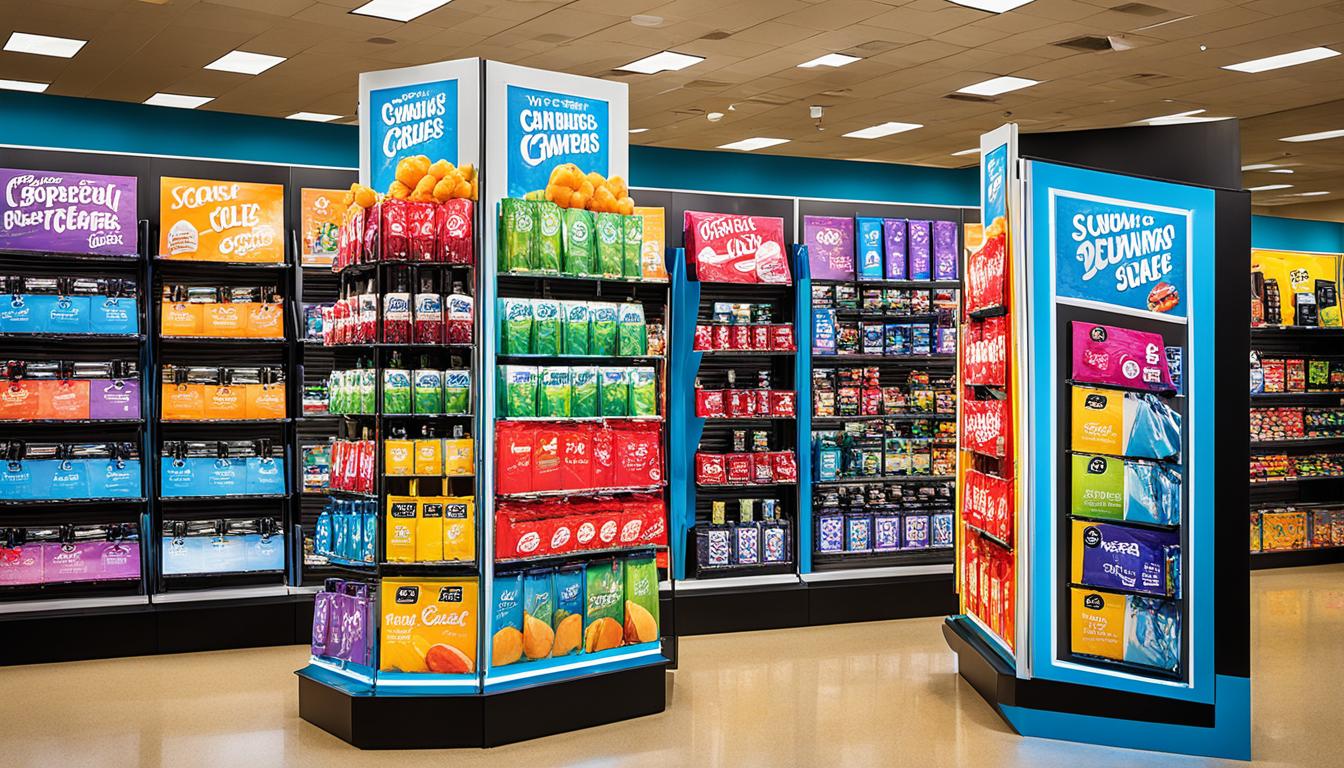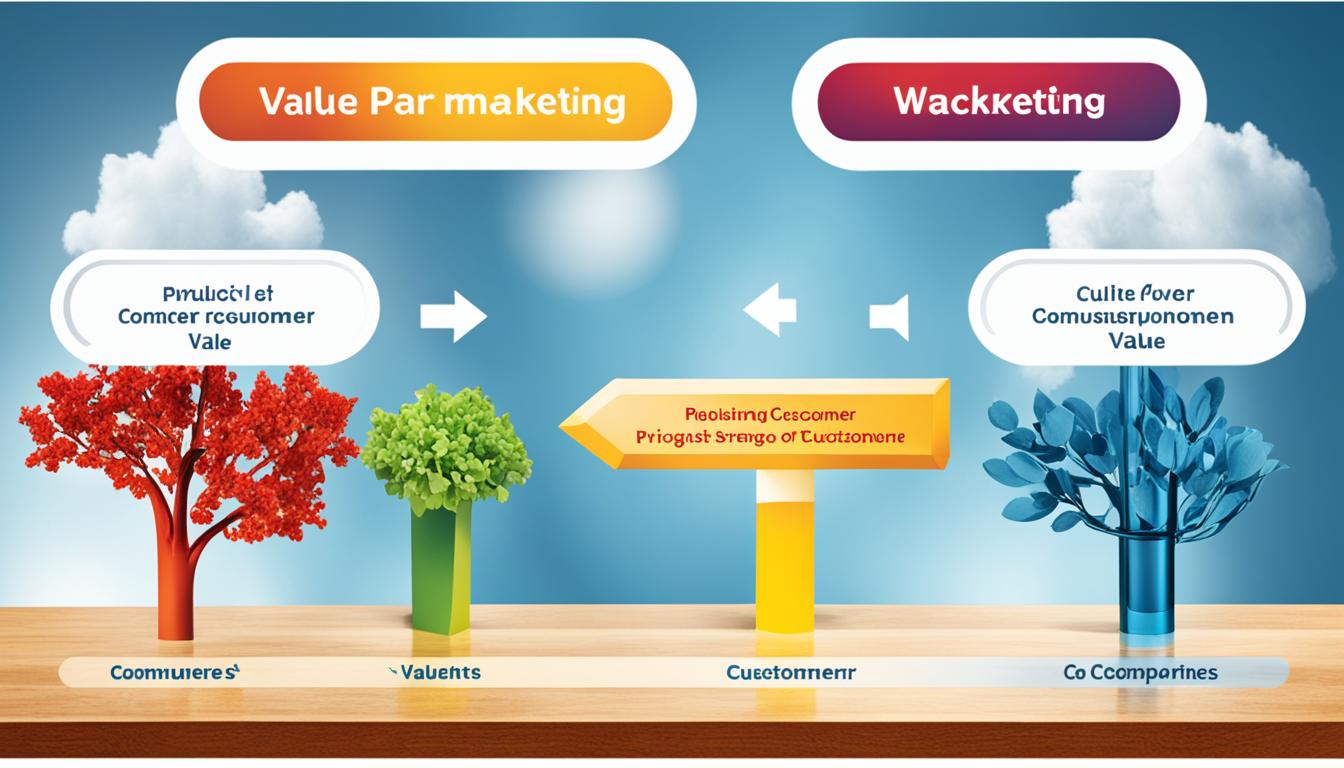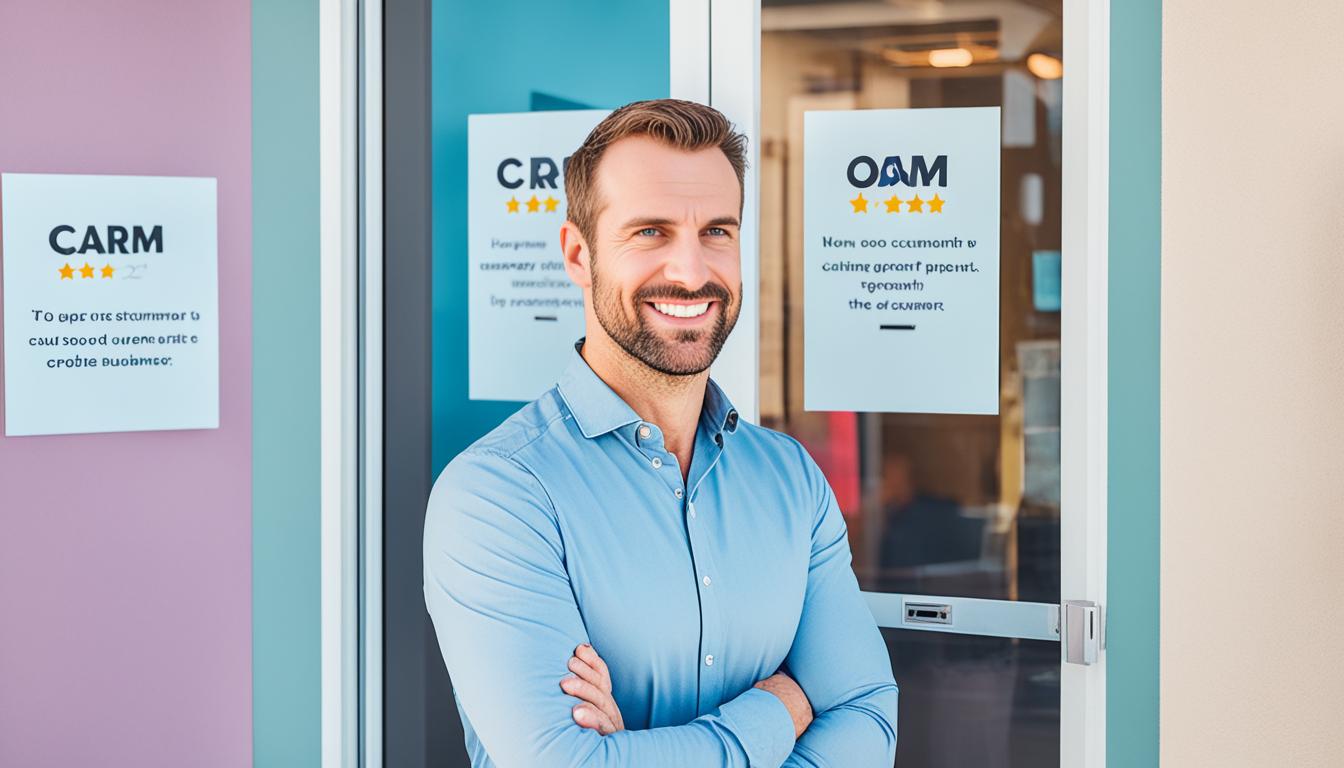Seeding in marketing is a great way to help brands connect with their audience. It boosts brand awareness and brings in valuable leads. Through smart placement of content, brands can spark interest in what they offer. This piece will explore seeding as a marketing tactic. We’ll look at real campaigns that worked, to help you craft your strategy.
Key Takeaways:
- Seeding in marketing involves planting content to reach the target audience and attract leads.
- Content seeding utilizes influencers to promote products on social media platforms.
- Micro-influencers can be effective for targeting specific segments of the audience.
- Social media platforms offer wide reach and engagement opportunities for content seeding campaigns.
- Creating an effective seeding strategy involves setting goals, selecting the right influencers, and measuring outcomes.
What is Content Seeding?
Content seeding is when creators spread a brand’s content across various platforms. This is to connect with their audience and get leads. They work with influencers who share the brand’s products on social media.
Brands put content where it’s likely to be seen by the right people. This boosts brand awareness and trust. Influencers play a big role because their followers value their suggestions.
This method helps brands grow their presence. It also helps them bond with their audience. Ultimately, it boosts engagement and sales.
Creating a Content Seeding Strategy
Planning a content seeding strategy takes careful thought. Brands should concentrate on certain key points:
- Defining Objectives: Be clear about what you want to achieve, like better brand awareness or more leads.
- Identifying Target Audience: Find out who your target audience is. This ensures you work with influencers who attract followers that fit your brand.
- Compelling Content Creation: Make content that grabs your audience’s attention and speaks to them.
- Influencer Selection: Pick influencers who share your brand’s values. They can share your message well.
- Platform Selection: Choose the right social media platforms. Your target audience should be active there. This gets your content seen by more people.
- Measuring Success: Use metrics like impressions and engagement rates to see how well your strategy works.
Following these steps helps you get your brand noticed. It draws in leads and keeps your audience engaged.
| Benefits of Content Seeding | Benefits Explanation |
|---|---|
| Increased brand awareness | Content seeding helps more people find out about your brand. This leads to greater recognition. |
| Enhanced credibility | When influencers support your brand, it becomes more credible to consumers. |
| Targeted leads generation | This strategy lets you connect with your ideal customers. This increases your chance of getting quality leads. |
| Establishment of brand affinity | Showing up regularly with useful content makes your audience feel closer to your brand. They become more loyal. |
Influencer Seeding
Influencer seeding is a key strategy in influencer marketing. It boosts brand promotion and builds trust with audiences. Brands collaborate with influencers, offering them products or services for reviews or promotions. This approach uses influencers’ reach and credibility to increase brand visibility and trust.
Influencers have a strong trust bond with their followers. People look up to influencers for advice and trust their opinions. When an influencer supports a product, their followers are more likely to trust and buy it. This makes influencer seeding a powerful way to promote brands.
Micro-influencers have become very important. They may have fewer followers, but their audiences are very engaged. This makes them perfect for reaching specific groups of people. Brands can use micro-influencers to target the right audiences effectively.
Influencer seeding taps into word-of-mouth marketing. Influencers share their real experiences, acting like brand ambassadors. This approach is more impactful than traditional ads. It helps brands make genuine connections with their audience on social media.
Benefits of Influencer Seeding
There are many benefits to using influencer seeding:
- It builds strong word-of-mouth credibility. Influencers’ positive reviews make their followers trust a brand more.
- It increases a brand’s visibility. Influencers introduce brands to new audiences, spreading the word on social media.
- It allows brands to reach specific audiences. Working with micro-influencers targets audiences that match the brand’s needs.
- It brings authenticity and trust. Influencers’ real recommendations make their followers more engaged and likely to convert.
- It’s cost-effective. Influencer seeding can be cheaper and more effective than traditional ads, especially for small brands.
Influencer seeding is now essential in brand promotion. It’s changing marketing, helping brands connect with audiences in meaningful ways. By partnering with influencers, brands gain trust, authenticity, and credibility. This results in a stronger connection with customers.
| Influencer | Platform | Brand Collaboration |
|---|---|---|
| Kylie Jenner | Collaborated with makeup brands like Kylie Cosmetics and shared product reviews and tutorials. | |
| PewDiePie | YouTube | Promoted video games and technology products through gameplay videos and reviews. |
| Nikki Blackketter | TikTok | Partnered with fitness and athleisure brands, showcasing workout routines and promoting products. |
| Gary Vaynerchuk | Collaborated with various business and marketing tools, sharing insights and promoting products/services. | |
| Emma Chamberlain | YouTube | Collaborated with fashion and lifestyle brands, featuring hauls, vlogs, and brand promotions. |
Platforms for Content Seeding
Blogging and editorial outlets used to be the main ways to seed content. Now, social media platforms are leading the way for brands. These platforms reach a lot of people and offer great engagement, helping brands connect with their target audience. Let’s look at some top platforms for content seeding.
Social Media Platforms
Social media platforms like TikTok, Twitter, YouTube, Facebook, Instagram, LinkedIn, podcasts, and Pinterest give brands many ways to share their content. They reach billions globally, making them perfect for content seeding. Each one has unique features, letting brands connect with their audience in different ways.
For instance, TikTok’s short videos are great for keeping users entertained and engaged. Twitter is perfect for joining trending topics and sending out strong, brief messages. YouTube lets you make longer videos for a huge audience. Facebook helps build communities and strengthen brand loyalty.
Instagram’s Visual Appeal
Instagram is all about visuals. It’s perfect for content seeding. Brands can make eye-catching posts, stories, and IGTV videos. Features like hashtags and location tags let brands reach more people and target certain groups effectively.
Pinterest’s Inspirational Power
Pinterest is great for finding and sharing inspiring content. Brands can make attractive pins and boards that match what their audience loves. It’s a place where users look for new ideas on things like fashion, home decor, or recipes.
LinkedIn for Professional Reach
LinkedIn is ideal for reaching professionals with your content. Brands can share insights and connect with people from different sectors. It’s a great way to reach specific professional groups and key decision-makers in industries.
Podcasts as an Engaging Medium
Podcasts are growing fast and offer a unique way to seed content. Brands can either partner with podcast hosts or start their own to share stories and insights. This medium lets brands have deep discussions and connect personally with their audience, building a strong bond.
| Platform | Key Features |
|---|---|
| TikTok | Short-form videos, viral trends |
| Concise messaging, trending conversations | |
| YouTube | Long-form videos, vast audience reach |
| Building communities, fostering brand loyalty | |
| Visually appealing posts, stories, IGTV videos | |
| Thought leadership, professional reach | |
| Podcasts | In-depth discussions, personal connections |
| Inspiration, visual discovery |
Creating an Effective Seeding Strategy
To do well in content seeding, you need a good plan. A smart seeding strategy helps brands interact with people, raises awareness, and boosts involvement. Think about several important factors to make your seeding strategy work well.
1. Establish Clear End Goals
Set clear goals before you start. Know what you aim to achieve, like more brand visibility, more web traffic, or more leads. Clear, measurable goals guide your plan and show what to track for success.
2. Research Ideal Influencers
Finding the right influencers is key. You must research to find ones who match your brand and audience. Choose influencers with a big, engaged following. Working with influencers who really connect with their audience boosts your campaign’s success.
3. Send Relevant Content and Products
To get influencers interested, give them content and products they and their followers will like. Make sure your content fits the influencer’s style. Good content gets influencers and their fans excited and supportive.
4. Actively Engage with Feedback
Interacting with influencers’ followers is important. Join conversations, answer questions, and talk about your brand. Engaging shows you care about their opinions and aim for a positive experience.
5. Measure the Outcome
It’s essential to check how well your seeding campaign did. Look at metrics like reach, engagement, and leads. Learn from the data to see what worked and what didn’t. Improve your strategy based on these insights.
Follow these steps for a successful seeding strategy. Set goals, find the right influencers, share great content, join the conversation, and review your results. A great seeding strategy helps reach your audience, boost engagement, and meet your marketing goals.
Content Seeding Examples
Content seeding is a strategy that works through partnerships. By collaborating, brands and creators can grow their presence. Here’s a look at some successful content seeding campaigns:
Claire Saffitz x Coveteur
Claire Saffitz teamed up with Coveteur, blending cooking with health. This partnership let Claire showcase her cooking skills. At the same time, Coveteur reached more people interested in health and cooking.
Mandy McEwen x LinkedIn Marketing
Mandy McEwen worked with LinkedIn Marketing on a leadership campaign. She used LinkedIn to grow her reach and prove her marketing skills. This made her a trusted name in marketing.
Lin-Manuel Miranda x Reddit
Lin-Manuel Miranda held an Ask Me Anything (AMA) on Reddit. He used this opportunity to connect with theater fans. This helped build his brand and grow his fanbase.
Louis Tomlinson x GQ
Louis Tomlinson partnered with GQ to talk directly to his fans. This helped him bond with his audience. It also helped GQ promote their YouTube channel.
Sara Blakely x MasterClass
Sara Blakely, the founder of Spanx, teamed up with MasterClass. She offered a course on entrepreneurship and shared her journey. This helped her inspire others and grew her brand with MasterClass.
These examples show that partnerships can promote brands effectively. By working with influencers, brands can become more recognized and reach more people.
The Benefits of Seeding in Marketing
Seeding in marketing helps brands in many ways. It builds brand affinity, establishes strong relationships, and earns trust and loyalty from their target audience.
Seeding’s main advantage is creating regular touchpoints with the audience. By placing brand content on different platforms, brands remain in the audience’s mind. This constant exposure builds familiarity and affinity, encouraging more engagement.
Moreover, seeding lets brands align with their audience’s values and interests. Carefully choosing platforms and influencers for content, brands become relevant and trustworthy. This alignment creates a personal connection with the audience, making the brand an advocate for their needs.
Trust building is key in seeding. Unlike traditional ads that might feel intrusive, seeding focuses on subtle trust building. This is done through trusted influencers and platforms. As a result, brands become reliable sources, increasing customer loyalty.
In the end, seeding boosts long-term loyalty and repeat purchases. Through relationship and trust-building, brands gain loyal customers. These customers not only buy again but also recommend the brand to others, expanding its impact.
| Benefits of Seeding in Marketing: |
|---|
| Builds brand affinity |
| Establishes personal relationships |
| Builds trust with the target audience |
| Increases customer loyalty |
How to Seed Sales through Marketing
Seeding sales through marketing takes a smart approach. It involves different strategies, strong messages, useful content, and reaching out to customers. By using these important elements, brands can grow their sales.
Developing Identity-Driven Messaging
Creating messages that reflect the customers’ values is key to seeding sales. You need to understand what your customers want and need. Then, create messages that talk directly to them. Show how your product or service can solve their problems or make their lives better. Connecting with your audience emotionally through messaging can increase brand support and sales.
Creating Value-Added Content
Providing valuable content is crucial. Brands must share informative, engaging, and useful content to become industry leaders. This content can be in the form of blog posts, videos, podcasts, ebooks, or webinars. The goal is to provide high-quality content. This helps to educate, entertain, or solve your audience’s problems. With valuable content, you can build trust, attract leads, and guide them towards making a purchase.
Reaching Customers Where They Are
Brands must connect with customers on their favorite platforms to seed sales well. Social media platforms offer great opportunities to reach out and connect with customers. You can use Facebook, Instagram, Twitter, and LinkedIn to reach your ideal customers. These platforms let you target your messages based on what customers like and do. By using these platforms wisely, brands can spread their message, connect with their audience, and increase sales.
Moreover, combining marketing with SEO can boost sales. When you optimize your website and content for search engines, more people can find you. This increases your brand’s visibility, website visitors, and sales.
| Marketing Strategies | Messaging | Value-Added Content | Reaching Customers |
|---|---|---|---|
| Utilize social media platforms | Create identity-driven messaging | Provide informative and valuable content | Engage with customers on their preferred platforms |
| Employ SEO techniques | Resonate with target audience’s values | Establish brand as a thought leader | Optimize websites for search engines |
| Collaborate with influencers | Connect emotionally with the audience | Offer educational resources | Target customers through precise demographics |
By using these Marketing Strategies, clear messaging, valuable content, and reaching out to customers, brands can grow their sales. Seeding campaigns work to increase brand support, trust, and loyalty. They provide customers with great content and meet their needs on their favorite platforms.
Conclusion
Seeding in marketing is a key way to build brand awareness, create strong relationships, and gain trust from potential customers. It uses content seeding and influencer partnerships to connect with people on different platforms. The content shared is both interesting and relevant to the audience.
Brands can make people feel good about them through seeding campaigns. This feeling leads to customer loyalty and more purchases in the future. Instead of just advertising, this strategy really values the audience. It connects with them personally.
In today’s tough market, being known and building relationships is more important than ever. Seeding strategies are vital for companies wanting to leave a mark. By using seeding effectively, brands can create lasting bonds with their audience. They can become known as trusted leaders in their field.




